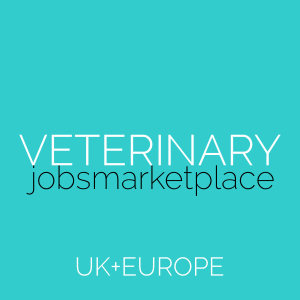
For veterinary recruitment & career success, align your Values, Skills, and Environment
For veterinarians, veterinary nurses and veterinary technicians, and for veterinary hospitals, clinics and businesses, ensuring that your values, skills, and environment align is essential for job satisfaction and long-term practice success. Aligning these factors is crucial for attracting, engaging, and retaining the best veterinary professionals, ultimately leading to a more productive and efficient practice. And for veterinary professionals, alignment of your values, skills and environment virtually guarantees a happy, successful veterinary career. Discover practical examples of how you can implement this strategy into your recruitment or career planning…
Find Veterinary Jobs…the Fresh Way
Aligning Values
Best Practice Medical and Surgical Standards – Veterinary professionals and practices must ensure that their medical and surgical standards align. This means that both parties prioritize providing the highest quality care using evidence-based practices and up-to-date techniques.
For Veterinary Professionals: When searching for a job, look for practices that have a strong reputation for adhering to best practice medical and surgical standards. Ask about their protocols, equipment, and continuing education efforts during the interview process to ensure that these align with your own commitment to excellence.
For Veterinary Practices: Make your commitment to best practice medical and surgical standards clear in your job postings and during the interview process. This will help attract candidates who share your dedication to providing top-notch care, leading to a better fit and improved staff retention.
Work-Life Balance – Aligning on the importance of work-life balance is crucial for veterinary professionals and practices to ensure long-term job satisfaction and staff retention.
For Veterinary Professionals: Look for practices that offer flexible scheduling, emphasize mental health and well-being, and have a supportive work culture. Ask to talk to team members at all levels and ensure that what is said during the interview is also reaffirmed on the ground.
For Veterinary Practices: Offer flexible scheduling options, encourage open communication about stress and burnout, and provide resources to support staff well-being. Talk about specific examples of situations where you demonstrated being flexible when a need arose.
Community Engagement – For many veterinary professionals, community engagement and giving back is a core value. Aligning with a practice that shares this value can lead to greater job satisfaction and sense of purpose.
For Veterinary Professionals: Seek out practices that participate in community events, offer local educational programs, or partner with local animal shelters.
For Veterinary Practices: Demonstrate your commitment to community engagement by actively participating in events, supporting local animal welfare organizations, and encouraging local educational programs with schools or community groups.
Aligning Skills
Professional Development – Both veterinary professionals and practices benefit from ongoing professional development, which helps to keep skills up-to-date and improve the quality of care provided.
For Veterinary Professionals: Look for practices that specify PD stipends or funding and ask about specific courses that team members have attended in the last 12 months.
For Veterinary Practices: Offer examples of courses that team members have undertaken on your job ads and have a list that you can refer to during interviews.
Skill Matching – Veterinary professionals should seek out positions that match their skills and expertise, while practices should aim to hire staff whose skills align with their needs. Bridging gaps and filling knowledge deserts help to create a team atmosphere where collaboration flows naturally.
For Veterinary Professionals: Be honest about your skills and experience when applying for jobs, and look for positions that will allow you to apply your existing skills as well as the chance to learn new ones.
For Veterinary Practices: Be specific about the skills and qualifications required for each position, and ensure that candidates meet these requirements or can grow into them before hiring.
Opportunities for Growth – Veterinary professionals should look for practices that offer opportunities for growth and advancement, while practices should provide these opportunities to retain top talent.
For Veterinary Professionals: Inquire about advancement opportunities during the interview process, and seek out practices that have a history of promoting from within.
For Veterinary Practices: Offer clear pathways for career advancement and promote from within whenever possible.
Aligning Environment
Workplace Culture – A positive workplace culture can lead to greater job satisfaction and staff retention for veterinary professionals. Both professionals and practices should prioritize creating an environment that fosters collaboration, support, and inclusivity.
For Veterinary Professionals: During interviews, ask questions about the workplace culture and observe interactions among staff members to get a sense of the practice’s environment.
For Veterinary Practices: Foster a positive workplace culture by promoting open communication, teamwork, and inclusivity, and addressing any issues or conflicts promptly and fairly.
Physical Environment – The physical environment of a veterinary practice can have a significant impact on the well-being of both professionals and patients. Practices should strive to create a clean, organized, and comfortable space, while professionals should seek out practices that prioritize these factors.
For Veterinary Professionals: Consider the physical environment during interviews or practice visits. Look for clean, organized facilities that promote a comfortable atmosphere for both staff and patients.
For Veterinary Practices: Regularly assess and maintain the cleanliness and organization of your practice, and invest in improvements to create a comfortable and efficient work environment.
Access to Resources and Equipment – Having access to the necessary resources and equipment is crucial for veterinary professionals to provide the best possible care. Practices should ensure that they are well-equipped and that staff have access to the resources they need.
For Veterinary Professionals: Inquire about the availability of resources and equipment during interviews, and seek out practices that prioritize providing staff with the necessary tools for their work.
For Veterinary Practices: Regularly assess your practice’s equipment and resources to ensure they are up-to-date and readily available for staff use.
In Conclusion…
Aligning values, skills, and environment is essential for both veterinary professionals and practices to create a successful partnership. By taking these factors into account during the recruitment process, both parties can improve job satisfaction, retention, and overall workplace culture. Ultimately, this alignment will lead to a better recruitment outcome and help build a practice culture that continues to attract, engage, and retain the best veterinary professionals. By working together, veterinary professionals and practices can ensure the highest level of care for their patients and ensure a fulfilling, rewarding veterinary career.
About Veterinary Jobs Marketplace…
We connect veterinary talent with the best veterinary jobs. Explore our Job Campaigns for GP Veterinarians, Emergency Vets, Veterinary Nurses, Technicians, and more, enriched with video insights. Find new team members using our unique Reach, Frequency, and Story strategy, now including One-to-One Outreach.
For Job Seekers: Discover your ideal veterinary jobs in cities across the UK and Europe. Register for custom Job Alerts, bringing the latest opportunities directly to your Inbox.
For Employers: Register to reach skilled veterinary professionals for your practice. From GP Veterinarians to Emergency Vets, our Job Campaigns help you find the perfect team members.
Worldwide Audience: Expand your reach internationally to the USA, Canada, Australia, New Zealand, and Asia. Our global reach will connect you to our global veterinary community.

